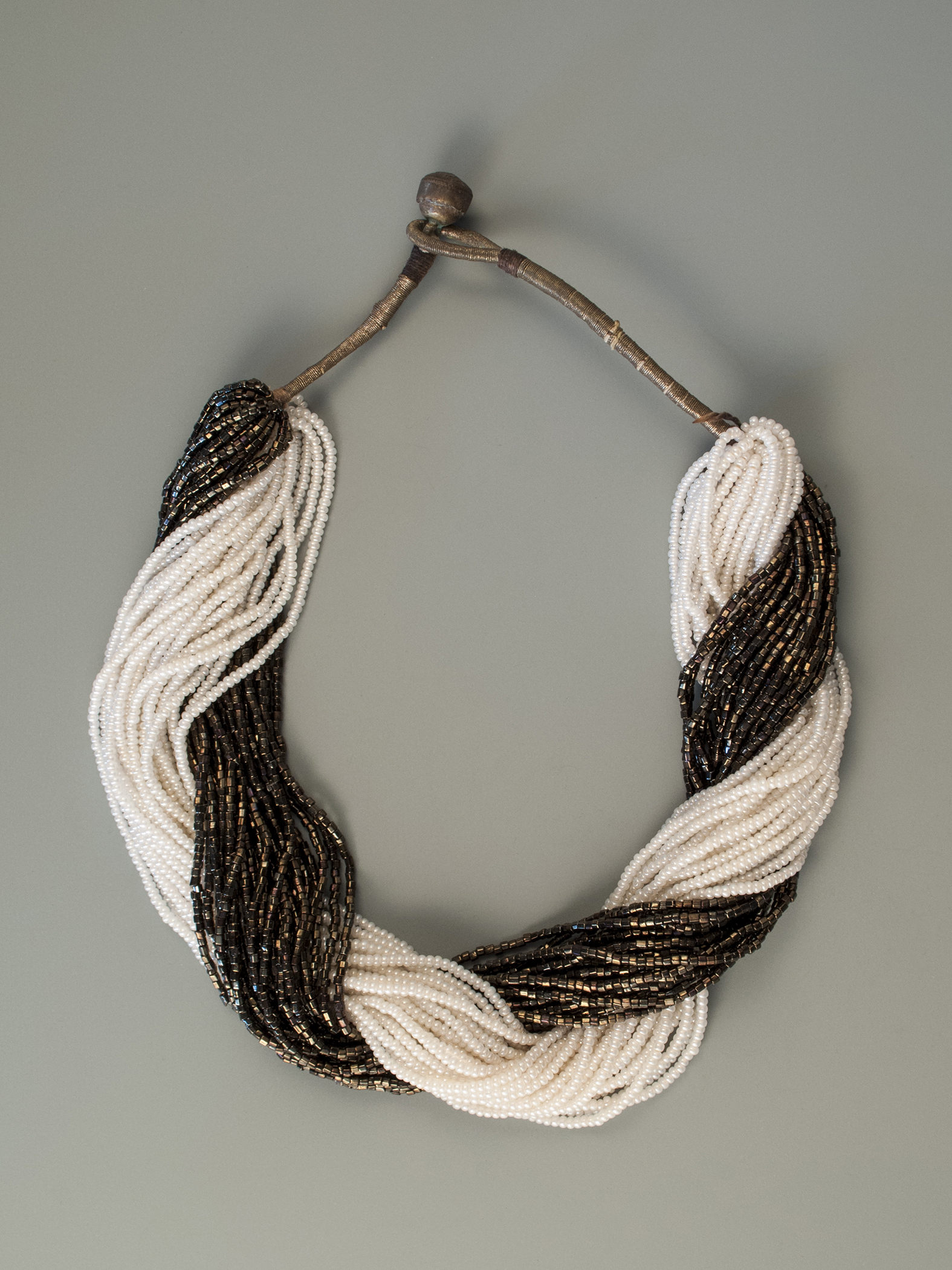Glass Bead Necklaces
Nepal, 1979

Near the Indrachowk temple, I ducked into a narrow lane and found myself in a labyrinth of cubicles, surrounded by a million strands of glass beads in a thousand shimmering colors. They dangled in bunches from hooks and hangers, like the seed pods of hallucinatory plants. Each string held hundreds of the tiny beads… These strands may be combined in infinite combinations, like jelly beans. Muslim merchants in white skullcaps sat in stalls no bigger than phone booths, cross-legged on white cushions, bare light bulbs suspended above their heads….
– abridged from Snake Lake
A recurring question during my visits to Kathmandu is: What to bring back for my lady friends? In love with everything (and everyone), I always buy too much— almost everything that catches my eye. As a result, I’m in possession of bins filled with unclaimed statues, textiles, thangkas (devotional Buddhist paintings), and jewelry. While these baubles seemed irresistible when I bought them, none have found their fated owners.
Over the years much of the magic has vanished from urban Kathmandu, hidden by clouds of dust, smog, smoke. But the Indrachowk bead market—perhaps because of its segregation from mainstream city life, both physically and racially—is an exception. Watching the Muslim merchants bind the hallucinatory strands together, using golden thread and a whirling, handheld bob, is a hypnotic demonstration of skill so practiced it seems like sleight-of-hand. Time after time, I’m tricked into believing that the magic I witness in that market will translate to the gift itself. It never does. The necklaces, once home, never look as exotic as they did under those incandescent bulbs.
Still, every trip I’ve made to Nepal—from 1979 to 2018—has included a trip to the bead market. A friend in Alaska once told me that his ex-girlfriend’s garage was “filled with broken chainsaws.” Mine overflows with unclaimed necklaces. They really are pretty. And I think they were in
fashion, once. Maybe they’ve come back.
Take these, please. There are plenty more where they came from.
